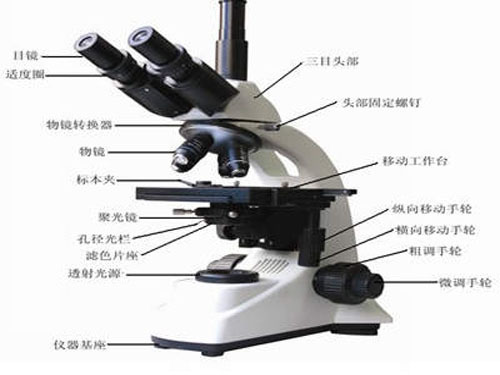Western learning of the microscope

As early as the first century BC, people had discovered that when they viewed tiny objects through spherical transparent objects, they could be enlarged and imaged. But until the middle of the 15th century, a single-mode microscope in the modern sense began to appear. A single microscope with only one lens is what people now commonly call a "magnifier." Its origins are counted from the observation of insects using a lens. In 1625, Steilutti detailed the pattern of the bee parts with a 5x and 10x single microscope, published by the Italian Academy for the Deaf, which is the first book on microscopy.
The compound microscope consisting of two lenses has not been completely determined by its inventors until now. British Diggs pointed out in his father's "Scaling" book that the combination of convex and concave lenses increases the magnification.
But it is generally believed that the Janssen father and son of the Netherlands is the inventor of modern compound microscopes. Zaharijes Jensen assembled convex and concave lenses at the ends of three tubes with a diameter of about 5 cm and a length of about 30 cm to form a compound microscope. Another Dutchman, Drebel, designed a better instrument at the same time, so Galileo assigned him the invention of the microscope. However, they did not make any important observations with these instruments.
The astronomer Kepler explained the optical principle of the microscope in his article "Optical optics" in 1611. In 1625, Faber of Italy called the instrument "microscope."
The true scientific application of the microscope is also due to a scientist and a naturalist. The scientist refers to Galileo of Italy. After observing an insect through a microscope, he described his compound eye for the first time.
The naturalist was Levenhucker, a Dutch linen merchant who learned to grind lenses himself. For the first time, he described many tiny plants and animals that were invisible to the naked eye. This is one of the most important people who make a microscope and use it for biological observation. Leeuwenhoek left a total of 247 microscopes and 172 lenses throughout his life. The smallest focal length is only about 5 millimeters, and the diameter is less than 3.2 millimeters. The magnification is 300 times and the resolution is 1 micron. With these microscopes, Leeuwenhoek became the pioneer of microscopy and microbiology.
The time when all this happened coincided with the period when Western learning began to flourish in the late Ming and early Qing dynasties. During this period, a large number of "strange devices" from the West were introduced into China, which made Chinese people's understanding of the microscope not too sluggish in the Western world.
Joseph Needham believes that the “mirror micromirror†produced by Sun Yunqiu in China is a compound microscope. Our country Huang Zhuangzhuang also manufactured microscopes from 1675 to 1685. The use of the term "microscope" in our country, as far as we know it, first appeared in Li Yucheng's novel "12th Floor Xia Yi Lou" in 1658. In this book, he wrote: "Like money, there are three feet, and with very little and fine things placed in the three feet, from the top, it becomes extremely grand and huge." The genus of pheasants, several types of canines, the genus of mosquitoes, and the same pheasant cranes, and the hairs on their bodies, the color of the wings of mosquitoes, all feel very impressive, so they are called microscopic. It can show signs of light and make it brighter." Li Yu said that it was a single microscope because the book said "like money, there are three feet," and is similar to today's magnifier.
Although the exact time for the introduction of the microscope into China is no longer valid, it is certain that in 1687, the missionary sent by King Louis XIV of China to the Emperor Kangxi offered a lot of “tremendous treasuresâ€. microscope.
During the entire Kangxi dry period, there were not a few microscopes brought into China by foreign missionaries. However, its application has never been able to move from "strange and clever" to scientific research. From the Qianlong Emperor's "Microscopy of the Skull", this was only a microscopic observation of the atmosphere of playing things: Glass was a mirror, and vision was very bizarre.
How to catch the device, its name is microscopic.
It can be as small as a small thing, and it is not worth mentioning.
It is far from being hidden.
I think of water and clarion, and use it.
Until the time of the Guangxu period, with the introduction of microscopes, more and more people in China gradually learned more about the microscope. The British missionary Flora has done a lot of work on this. In his editor's book "The Collection of Gezhi", there was an article - "Release Microscope" - which specifically introduced the use, structure and working principle of the microscope. If the appearance of the telescope changed the human understanding of the universe, then the appearance of the microscope brought humanity into the cellular era. Similar to the great fate of modern science in China, the introduction of the microscope did not enable China to complete the modern scientific revolution with the help of Western studies. Its true mission in modern Chinese medicine and life science was not completed until the Republic of China.
Do you work with steel in your manufacturing facility? Whether it's turnings, chips, filings, shavings, cuttings, sawdust, drillings, borings, debris, granules or sludge, a steel Briquette Machine from Ecohydraulic is the solution. Steel briquetting can double the value you get, cause steel briquettes are easier to manage, transport, sell and recycle. It can also squeeze out the liquids from your scraps.
Steel Briquetter, Steel Shavings Briquette Machine, Steel Chips Briquette Machine, Steel Briquetting Press, Steel Briquetting Machine
Jiangyin Metallurgy Hydraulic Machinery Factory , https://www.ecometalrecycle.com